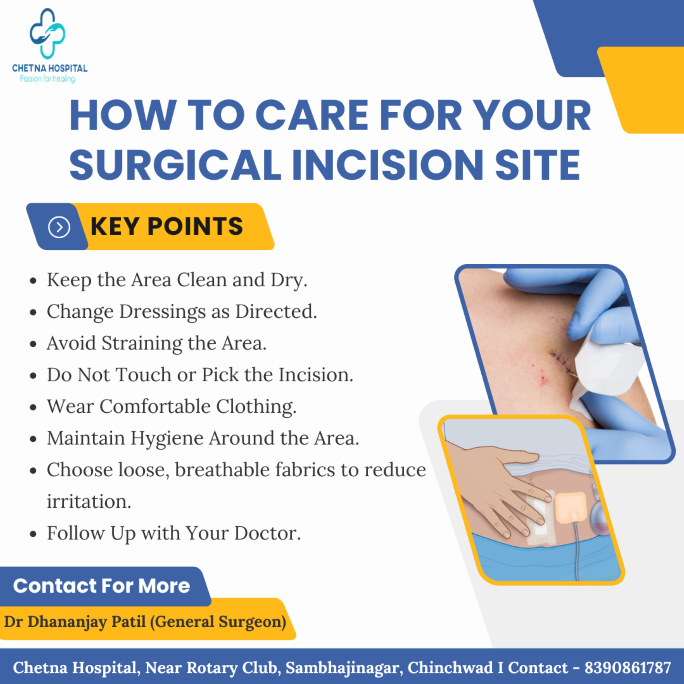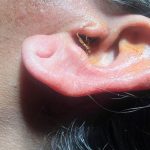Recovering from surgery can be a challenging process, and proper care of your surgical incision is critical to ensure smooth healing, minimize scarring, and prevent infections. Incisions are delicate areas that require consistent attention during your recovery journey. This comprehensive guide provides detailed tips to help you take care of your surgical site effectively.
Why Proper Incision Care Matters
Surgical incisions create an intentional wound in your body to treat an underlying medical condition. As your body heals, new tissue forms to close the incision. However, without proper care, complications such as infections, delayed healing, or excessive scarring may arise. Taking the right precautions promotes faster recovery and prevents unnecessary health risks.
1. Keep the Area Clean and Dry
Cleanliness is the foundation of incision care. Follow your surgeon’s guidelines about washing the site:
- Gently Clean the Area: Use mild soap and warm water if instructed. Avoid scrubbing the incision—instead, pat the area gently with a soft, clean cloth.
- Avoid Submersion: Until the incision fully heals, do not soak in baths, swimming pools, or hot tubs. These environments can harbor bacteria that may lead to infections.
- Dry Thoroughly: After cleaning, ensure the area is completely dry. Moisture around the incision site can promote bacterial growth.
2. Change Dressings as Advised
Your surgeon will provide instructions on how often to change the dressing and what materials to use:
- Use sterile gauze or bandages to protect the incision from dirt and bacteria.
- Change the dressing only as directed, as frequently changing it unnecessarily may disturb the healing process.
- Wash your hands thoroughly before and after handling the dressing to maintain hygiene.
3. Recognize Signs of Infection
Knowing the warning signs of an infection is crucial:
- Redness or Swelling: Some redness is normal, but spreading redness or swelling could indicate an issue.
- Pus or Foul Odor: Discharge from the incision that is yellow, green, or foul-smelling is often a sign of infection.
- Pain or Warmth: Increased pain, heat, or tenderness near the incision site warrants medical attention.
- Fever or Chills: These systemic symptoms may indicate a more serious infection.
If you notice any of these signs, contact your healthcare provider immediately.
4. Protect the Site from Strain
Activities that strain or stress the surgical site can hinder healing:
- Avoid heavy lifting, intense exercises, or any movement that causes pain near the incision.
- Gradually reintroduce physical activities as per your doctor’s recommendations.
- Use supportive measures such as abdominal binders if advised for surgeries like hernia repair.
5. Avoid Touching the Incision
Your incision site should be kept as sterile as possible:
- Refrain from touching the area unnecessarily. Dirty hands can transfer bacteria to the healing wound.
- Avoid picking at scabs or dried skin, as this can reopen the wound and delay healing.
- Do not apply creams, oils, or ointments without consulting your doctor first.
6. Choose Comfortable Clothing
What you wear during your recovery can impact your comfort and the healing process:
- Opt for loose, breathable clothing that doesn’t rub against the incision.
- Cotton fabrics are often a good choice as they allow air circulation and reduce irritation.
- Avoid tight waistbands, belts, or restrictive outfits near the surgical site.
7. Stay Hydrated and Maintain a Healthy Diet
Your diet plays a significant role in wound healing:
- Drink plenty of water to stay hydrated, as dehydration can slow tissue repair.
- Eat protein-rich foods such as eggs, lean meat, fish, and legumes to aid in tissue regeneration.
- Incorporate vitamins and minerals from fruits and vegetables to strengthen your immune system.
- Avoid processed foods and excess sugar, as these can delay recovery.
8. Follow Pain Management Guidelines
Pain is a natural part of the healing process, but it can be managed effectively:
- Take prescribed painkillers as directed by your surgeon. Over-the-counter medications may also be helpful, but consult your doctor before use.
- Non-medication options such as ice packs (if recommended) can reduce swelling and discomfort.
9. Protect the Incision from Sunlight
Direct sun exposure can harm your healing incision:
- UV rays can darken scars and make them more noticeable.
- Cover the site with clothing or a sterile bandage if you’re stepping outside.
- Once healed, you can use sunscreen on the scar to minimize discoloration.
10. Understand the Healing Timeline
Be patient with the healing process, as it varies for everyone:
- Initial Stage (Days 1-7): The wound may be red, swollen, and tender. Keep it clean and covered as directed.
- Intermediate Stage (Weeks 2-4): Pain and swelling begin to subside. Continue monitoring for signs of infection and follow up with your doctor.
- Late Stage (Months 1-6): The scar starts to mature and fade. Maintain care to avoid reopening the incision.
11. Monitor for Unusual Symptoms
Besides infection, watch for other complications like:
- Bleeding that does not stop after applying pressure.
- The wound edges pulling apart.
- Persistent or worsening pain despite medication.
Seek medical help immediately if you experience any of these symptoms.
12. Attend Follow-Up Appointments
Regular check-ups with your surgeon are essential for assessing recovery:
- Your doctor will inspect the incision site, remove stitches or staples if required, and address any concerns.
- Skipping appointments may lead to unnoticed complications.
Conclusion
Caring for your surgical incision site may seem daunting at first, but following these steps can significantly reduce risks and promote optimal healing. Always adhere to your surgeon’s instructions, maintain good hygiene, and prioritize follow-ups for the best outcomes. By taking an active role in your post-surgical care, you’ll ensure a faster, safer recovery.













